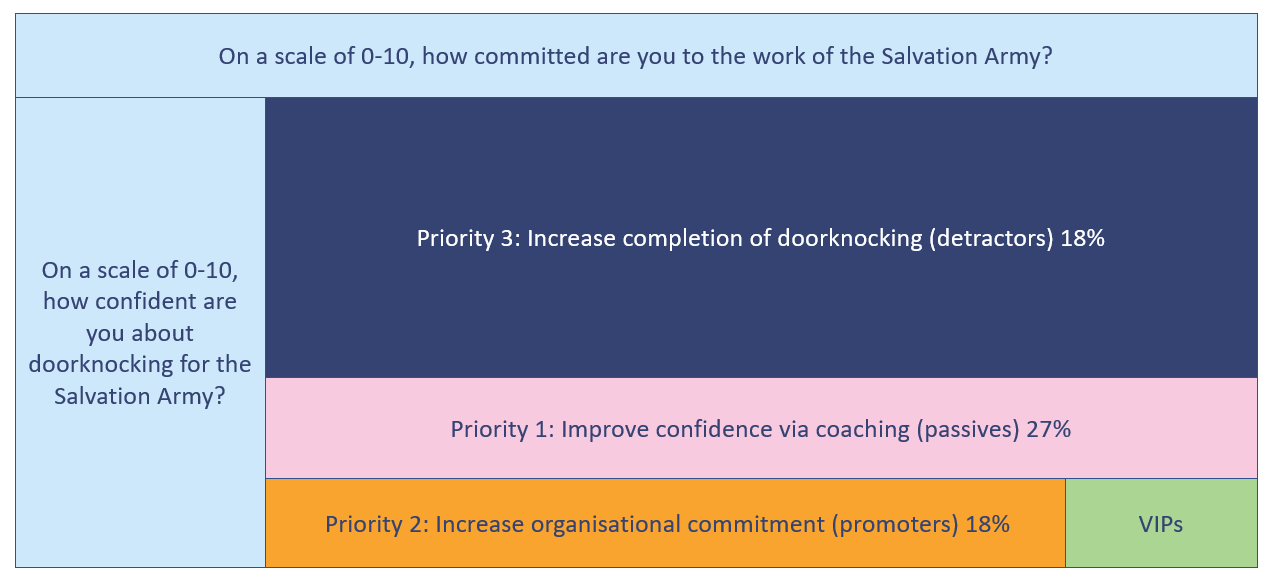
The team at More Strategic love working with not for profit organisations to build engagement with their audience – evoking more people, to do more for their cause. Karen Armstrong is the Director of More Impact – part of the More Strategic group. As a marketing expert with over 15-years’ experience across the NFP and FMCG (Fast-moving Consuming Goods) sectors – we invited Karen to be our guest blogger and discuss the concept of Experience Management.
Experience Management
Take a moment to reflect back on a great experience you’ve had with a charity.
How did it make you feel? What made it memorable? How did you continue to engage with the charity?
Now do the same for a recent commercial experience. Did either elicit a stronger response and why?
If we examine the investment made by commercial organisations in Customer Experience (CX) it has proven significant financial upsides and I believe charities can reap these benefits also. Opportunities to apply CX include:
* Improving our supporter experience to increase retention and the lifetime value.
* Improving the experience of our clients so they continue to come back and utilise their NDIS or aged care packages with us.
* Improving our allocation of limited funds to best performing marketing and fundraising activities.
* Improving our employee and volunteer experience so they become our greatest advocates.
An Adobe commissioned paper ‘The Business Impact of Investing in Experience’ has measured that companies capable of driving experience-led businesses deliver:
* 6X Customer Lifetime Value
* 9X Average Order Value
* 2X Faster in initiatives to market
* 7X Customer Retention
There are simple solutions to help your organisation apply a CX lens to your activities.
These are my top tips:
- Goals: Agree on a number of top-level objectives i.e to improve retention of clients or supporters by 5%, unifying the organisation to work towards these shared goals
- Audiences: Understand your audiences and don’t treat people like numbers. Immerse yourself outside of the organisation and consider how people think and feel when engaging with your organisation. Identifying 2 or 3 primary motivations along with what makes you memorable can be of tremendous value.
- Act on Insights: Implement short on-going surveys so that you understand your audiences on a 1:1 level and from this launch dialogue marketing. Rather than our historic “spray and pray” marketing tactics, dialogue marketing utilises data and conversational approach (encourages responses) so that we can provide a more personalised communication than ever before. Simple solutions like replacing content that is specific to a key motivation or creating feedback points through surveys to demonstrate we are listening and acting on the insights we gather about them.
- Technology: Take advantage of the accessible and cost-effective technology emerging every day to scale the type of personalised relationships we have always valued from charity. Over the past decade our growth exceeded what we could support with human resources alone but now we have the technology to enable this personal touch. Automated email journeys and conversational SMS bots are a capacity life-saver.
- Test & Learn: Apply a common sense approach to investment. Start small, prove the return on investment and then scale success. This approach really allows you to determine what is actually working, so you can put your funds to the area that will make the greatest impact.
How to regulate multiple points of experience with your organisation
One of the challenges I often hear from organisations is that people are engaging with their charity in many different ways and yet no experience is the same. All these experiences that straddle both program and service delivery, as well as fundraising, create a single view for the individual – but can be vastly different.
The simplicity of this approach allows collective problem solving to tackle our business challenges while directing our view externally to that of the consumer. Through the experience of cross-functional participation, often with very different skill sets, teams can learn from each other, the operation, and responsibilities of each team member.
The expertise of these multi-disciplinary teams can significantly enhance our understanding of one’s experience with our organisation and then the points that drive the greatest value and greatest brand memorability.
Thus solving the initial challenge to identify the single and common set of experiences across the organisation.
An example of applying CX principles – case study
The Salvation Army’s Red Shield Appeal Doorknock, a campaign more than 50 years old. Every year, thousands of volunteers are recruited to collect funds in their local neighbourhood. It is daunting to fundraise and generally, people have busy lives which can get in the way of collecting funds – as a result, less than 50% of volunteers were raising funds.
Events like this are heavily acquisition focused with around 80-90% new people every year, so it was also impossible to know which volunteer would raise the most and how we could help them to achieve this.
More Strategic worked with The Salvation Army, and created a simple attitudinal survey about commitment to the organisation and confidence in volunteering, The Salvation Army are now able to identify the volunteers that need some additional help and those that are confident and will flourish to become their greatest ambassadors. With a simple 2 segment strategy and the use of behavioural economics (a topic for another blog!) we were able to meet the needs of a large group of volunteers in a highly personalised and targeted way and invest appropriately by priority segment to ensure as much as possible was directed to the cause.

The results:
* Increased net return by 5%
* Increased average raised 15%
* Improved completion rates by 14%
* Increased overall average raised by 21%
* Delivered an ROI 7:1 for coaching journey
* Each year since we’ve seen reported improvements in the volunteer experience and growth in retention rates.
By applying a CX lens to your current initiatives you can achieve the following
* Deliver programs that meet audience needs
* Improve acquisition performance
* Improve retention
* Improve client or supporter servicing
* Invest cost-effectiveness in marketing and communications
* Create a consistent brand experience and
* Create employee and/or volunteer brand advocates
To find out further information on Experience Management, contact Karen at More Strategic.
